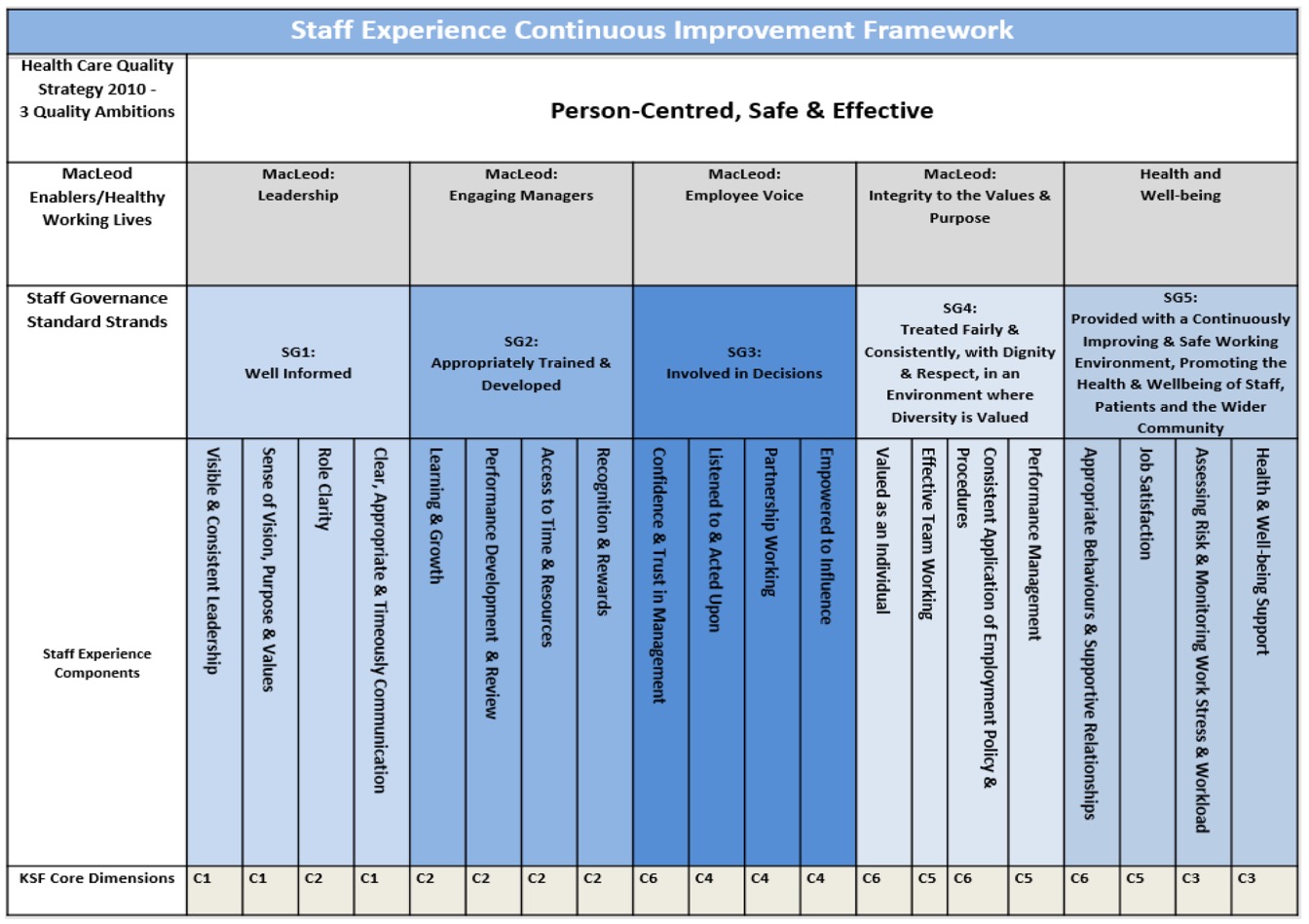Health and social care staff experience: report 2017
This report presents the 2017 national iMatter results together with national Dignity at Work survey results.
Appendix 4: Dignity at Work Background
Types of Survey Questions
There were various types of questions used in the Dignity at Work Survey. This section describes the types of questions that were included and highlights any important information that the reader should be aware of in relation to each question type.
Top Level Questions
‘Top level’ questions are defined as questions to which all respondents were expected to provide an answer.
Example:
During the past 12 months while working for your organisation, have you experienced unfair discrimination from your manager?
Sub-questions
‘Sub-questions’ are questions that respondents were expected to answer only where relevant to a previous response.
Example:
Did you report the unfair discrimination you experienced?
Note that the number of responses received for sub-questions will always be much lower than that received for top level questions as only a subset of respondents will have provided an answer to each sub-question.
Attitudinal questions on six-point scale
Three question were included with a six-point scale; these are:
- I believe it is safe to speak up and challenge the way things are done if I have concerns about quality, negligence or wrongdoing by staff
- I can meet all the conflicting demands on my time at work
- There are enough staff for me to do my job properly
These questions were phrased positively and invited participants to respond on a scale between six and one, six being the most positive response and one being the least positive.
Example:
| To what extent do you agree or disagree with the following statements? |
Strongly Agree |
|
Slightly Agree |
Slightly Disagree |
|
Strongly Disagree |
|---|---|---|---|---|---|---|
There are enough staff for me to do my job properly |
6 |
5 |
4 |
3 |
2 |
1 |
As with previous surveys, the main unit of measurement is the percentage of staff who answered positively to each question. For example, for questions where respondents were asked to indicate their level of agreement or disagreement, responses of strongly agree, agree were considered as the positive response.

Non Scale Questions
There were a number of non‐scale questions in the survey where respondents were invited to respond either ‘Yes’ or ‘No’. Where the question was positive, ‘Yes’ was considered to be a positive response.
Example:
Did you report the unfair discrimination you experienced?
Please note: that there were six questions in the survey where the question was negative (these were all phrased “Have you experienced….”). For these questions, ‘No’ was considered to be a positive response.
Example:
Have you experienced unfair discrimination from your manager?
In this case Yes would be a negative response and no would be a positive response.
Percentage of Positive Responses
As with previous surveys, the key unit of measurement provided throughout the report is the percentage of staff who responded ‘positively’ to each question.
For each question, the percentage of positive responses was calculated according to the number of respondents who provided a valid answer to that question. Respondents who did not provide a valid answer were excluded (e.g. no answer given, multiple answers on a paper questionnaire where a single a response is required).
| Total Number of Responses |
Number of Valid Responses |
Number of Positive Responses |
% of Positive |
|---|---|---|---|
1,023 |
1,000 |
800 |
80% |
The total number of valid responses received for each question is shown in the report for the charts relating to the question. These are shown as “number of respondents”.

Calculation of Responses
For ease of reading, all percentages are reported to the nearest whole number. Please note that all reported differences between results are based on rounded results.
Example:
| 2017 Result (unrounded) |
2015 Result (unrounded) |
2017 Result |
2015 Result |
Difference |
|---|---|---|---|---|
78.3 |
78.9 |
78 |
79 |
-1% |
Rounding percentages to the nearest whole number occasionally results in total percentages that do not add up to exactly 100% (in some charts / tables percentages may total 99% or 101%).
Contact
There is a problem
Thanks for your feedback